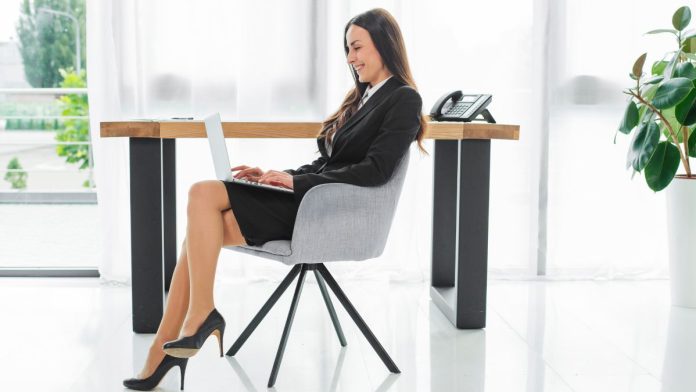
The importance of maintaining ergonomic excellence in the workplace cannot be overstated. With long hours spent at the office, it’s crucial to prioritise one’s well-being, and a significant part of that equation is the choice of office furniture. Among the many options available, high-back office chairs are a key element in promoting comfort and productivity. Explore the benefits of this office furniture and how they contribute to overall well-being.
Contents
Enhanced Lumbar Support
One of the primary advantages of high-back chairs is their ability to provide superior lumbar support. The lumbar region, or lower back, is a common area of discomfort for individuals who spend extended periods sitting at their desks. High-back chairs are designed with a contoured backrest that conforms to the spine’s natural curve, offering optimal support to the lumbar region. This feature helps to alleviate back pain and reduce the risk of developing chronic issues associated with poor posture.
Helping Improve Posture
Maintaining good posture is essential for overall health, and high-back office chairs play a significant role in achieving this goal. These chairs encourage proper alignment of the spine, reducing the strain on the neck and shoulders. When seated in a high-back chair, individuals are more likely to sit up straight and maintain a neutral position, which, over time, can lead to improved posture and decreased discomfort.
Comfort for Extended Work Hours
For those who spend long hours in the office, comfort is paramount. These furniture are designed with padded cushions that offer enhanced comfort even during extended work sessions. The extra padding on the seat and backrest provides a soft and supportive surface, reducing the likelihood of discomfort or fatigue. This added comfort allows individuals to stay focused and productive without constantly shifting in their seats.
Neck and Shoulder Relief
Neck and shoulder pain are frequent for office workers, often due to suboptimal ergonomics and insufficient support. These chairs, designed with an extended tall backrest, provide essential support to the neck and shoulders. This ergonomic design significantly reduces tension and strain in these areas.
Consequently, individuals experience increased comfort, enabling them to work efficiently and effectively without the hindrance of ongoing discomfort. These chairs often incorporate adjustable features, such as lumbar support and headrests, further enhancing the user’s posture and comfort during long working hours.
The Customisable Features
Another key advantage of these chairs is their versatility and array of customisable features. Many models come with adjustable armrests, seat height, tilt mechanisms, and sometimes even sliding seat pan options, allowing individuals to tailor the chair to their specific needs and posture.
This level of customisation ensures that the chair can comfortably accommodate a wide range of body types, sizes, and personal preferences. Additionally, these adjustments contribute to better ergonomic alignment, further enhancing the user’s overall well-being and productivity and reducing the risk of long-term musculoskeletal issues.
Conclusion
For ergonomic excellence and overall well-being in the workplace, the choice of office furniture plays a crucial role. High-back office chairs have proven to be an excellent investment for those looking to prioritise their comfort and productivity. With features like enhanced lumbar support, improved posture, extended comfort for long work hours, relief from neck and shoulder pain, and customisable options, these chairs are a valuable addition to any office setup.
When individuals prioritise their well-being at work by selecting this office furniture, they are taking a proactive step toward a healthier and more comfortable work environment. By reducing the risk of back pain, neck strain, and poor posture, these chairs contribute to enhanced productivity and job satisfaction. In essence, these chairs are not just pieces of furniture; they are tools for achieving ergonomic excellence and well-being in the modern workplace.
